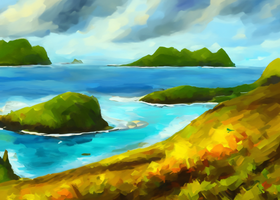Cracking The Ice: Time Zones of Antarctica and Surrounding Lands

Set foot on the icy expanse of the southernmost continent, and you'll encounter a landscape that’s as mystifying in terms of time as its pristine, icy beauty. Crossing several longitudinal lines, Antarctica and its surroundings are a fascinating study in the whimsical world of time zones.
The Complexity Beneath The Ice
In an ideal world, Antarctica, like the North Pole, would be carved among all 24 time zones. However, complexity arises from its uninhabited nature and its use by various research stations deployed by different countries. As a result, instead of adhering to geographical logic, base locations and national ties play a significant role in the Antarctic time zones.
Time Zones in Antarctica
Several countries maintain research stations in Antarctica and most of these stations follow the time zones of their respective supply ports:
- Palmer Station (U.S.) follows CLT (Chile Standard Time) in winter and CLST (Chile Summer Time) in summer.
- McMurdo Station and Amundsen–Scott South Pole Station (U.S.) use NZST (New Zealand Standard Time) in winter and NZDT (New Zealand Daylight Time) in summer.
- Australia's Casey Station adopts the time zone of Western Standard Time.
- France's Dumont d'Urville Station tracks the time of Paris, France.
- Italy's Mario Zucchelli Station runs on New Zealand's time due to logistical reasons.
These time zone selections simplify the stations' supply chains and coordination with their home ports. However, this means a dial set to local 'Antarctic Time' would simultaneously display multiple different hours, minutes and perhaps even dates!
Untamed Territory: The Unclaimed Slice
Time gets trickier near the unclaimed slice of Antarctica, between 90 degrees west and 150 degrees west. Without official governance, there isn't a 'standard' time zone. Expeditions to this region often continue to use their logistics base time or the most practical time zone for their purpose.
The Antarctic Peninsula and Surrounding Islands
The Antarctic Peninsula stretching towards South America and islands such as South Georgia and the South Sandwich Islands further complicate the Antarctic time puzzle. The peninsula primarily follows CLT (GMT -3) and CLST (GMT -2) in line with Chile's time zones. South Georgia and the South Sandwich Islands adhere to GST (South Georgia and the South Sandwich Time), which is 2 hours ahead of Greenwich Mean Time (GMT +2).
Adélie Land
Adélie Land, claimed by France and site for Dumont d'Urville Station, swaps between GMT+10 in winter and GMT+11 in summer, in sync with Tasmania's time as the majority of resupply missions depart from Hobart, Tasmania.
Conclusion: A Timeless Beauty
Despite being home to the South Pole, Antarctica does not have a 'South Pole Standard Time'. Instead, the system of timekeeping across this frozen frontier is a blend of logistical pragmatism and territorial allegiance. It's a stark reminder of how human influence can stretch even into the most remote corners of our planet.
Antarctica and its surrounding lands, with their unique practices, depict an extraordinary facet of our world's time zones. Whether you're an adventurous traveler, an aspiring researcher, or simply a curious individual, these insights shed light on how human systems interact with the natural world – even in its most extreme environments. As we continue to explore and understand these remote landscapes, we are reminded of the unconventional beauty of our world - in time and beyond.
Delving into the mysteries of our planet's timekeeping systems, the checkerboard of time zones across the expansive Antarctic region embodies the interplay of geographical, logistical, and territorial considerations. In navigating this complex world of time, Find Your Five PM serves as a beacon through its compelling concept. Covering more than 199,000 cities worldwide, each with a population of more than 500, our platform reveals where it's five o'clock at any given moment. Even in the fascinating landscapes of Antarctica, where diverse research stations operate on different time zones, it's always five o'clock somewhere. With Find Your Five PM, you can uncover where that somewhere is right this instant and appreciate the intricate dance of time that connects us all, from the most populated cities to the remotest corners of our planet.



